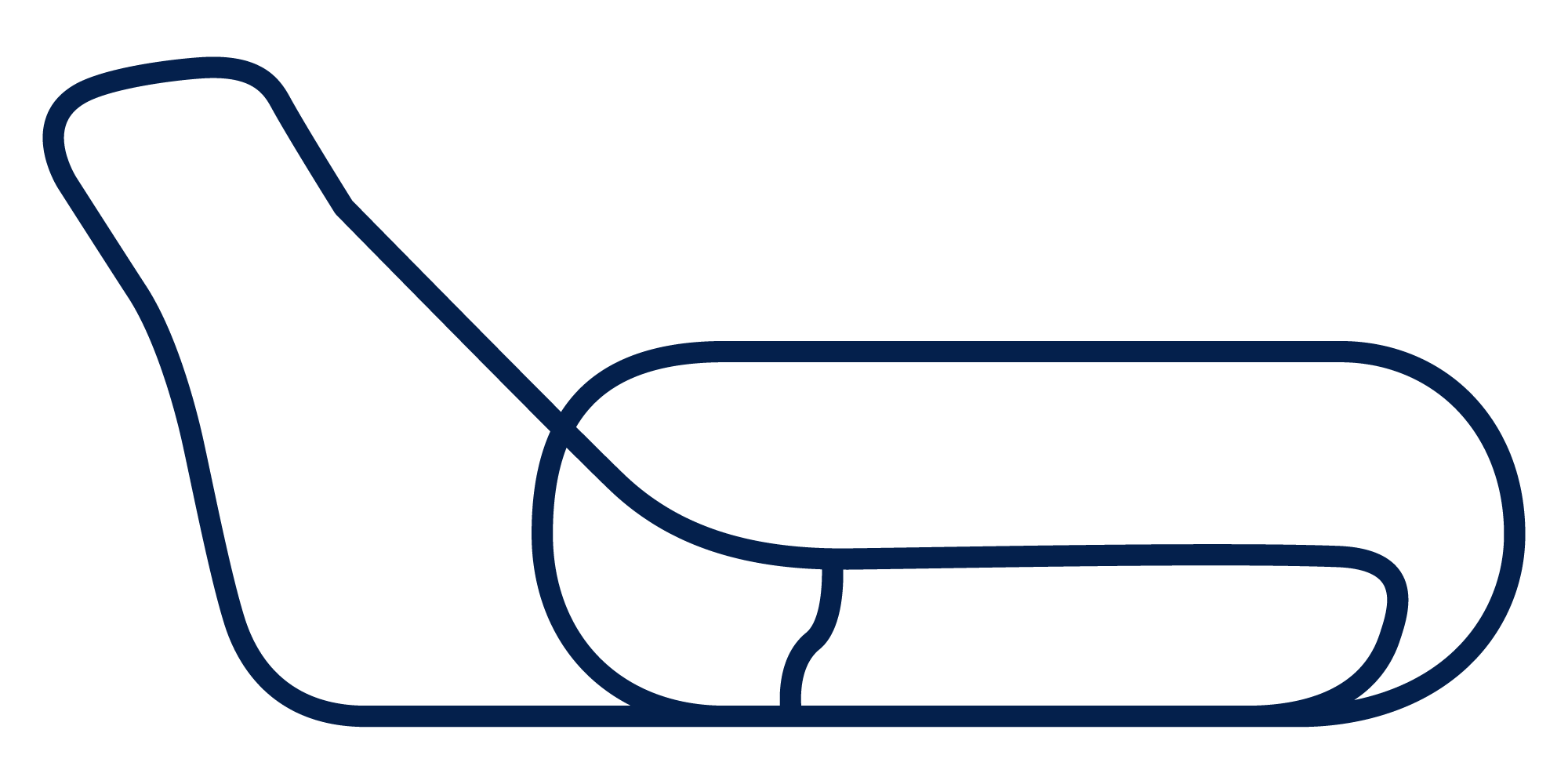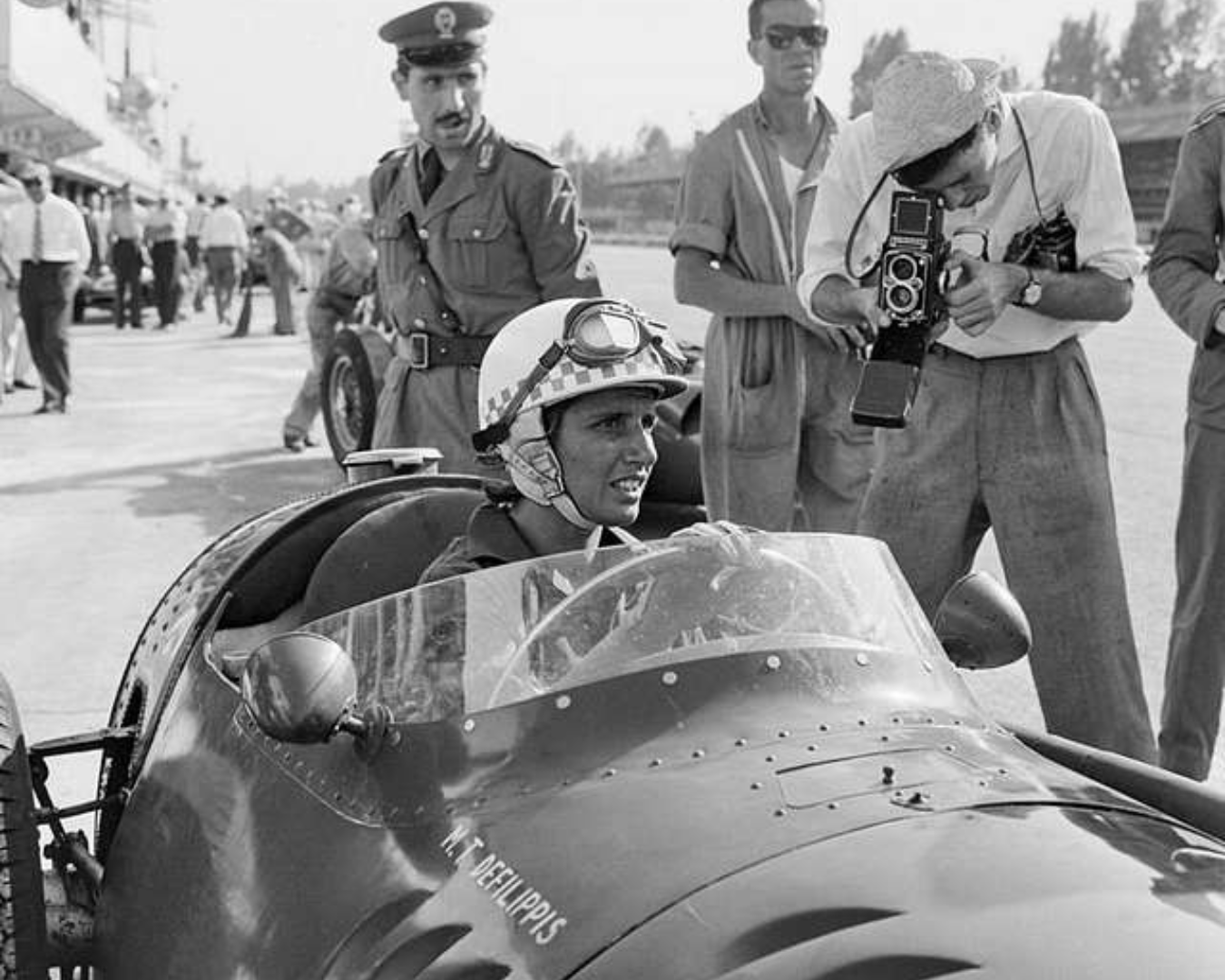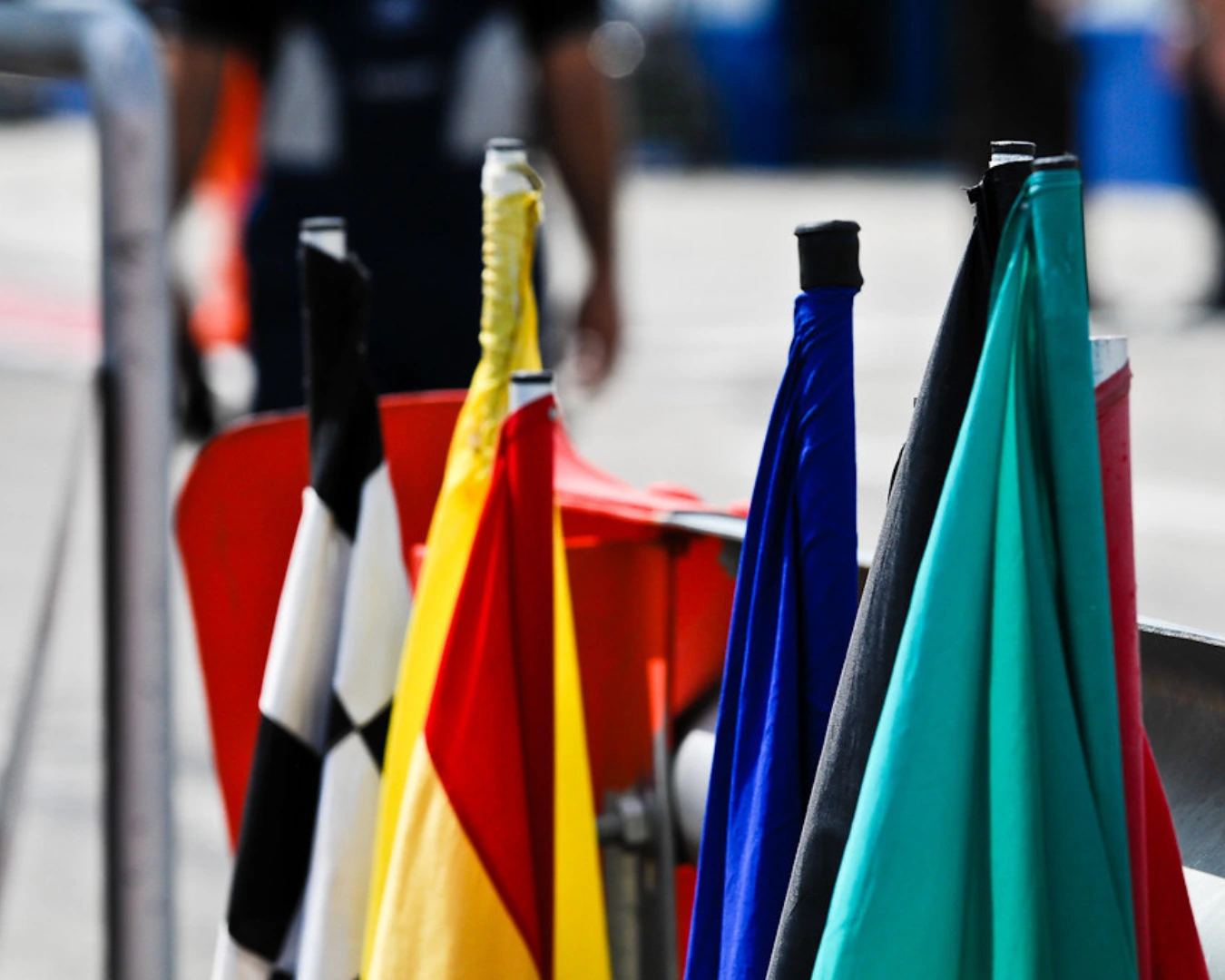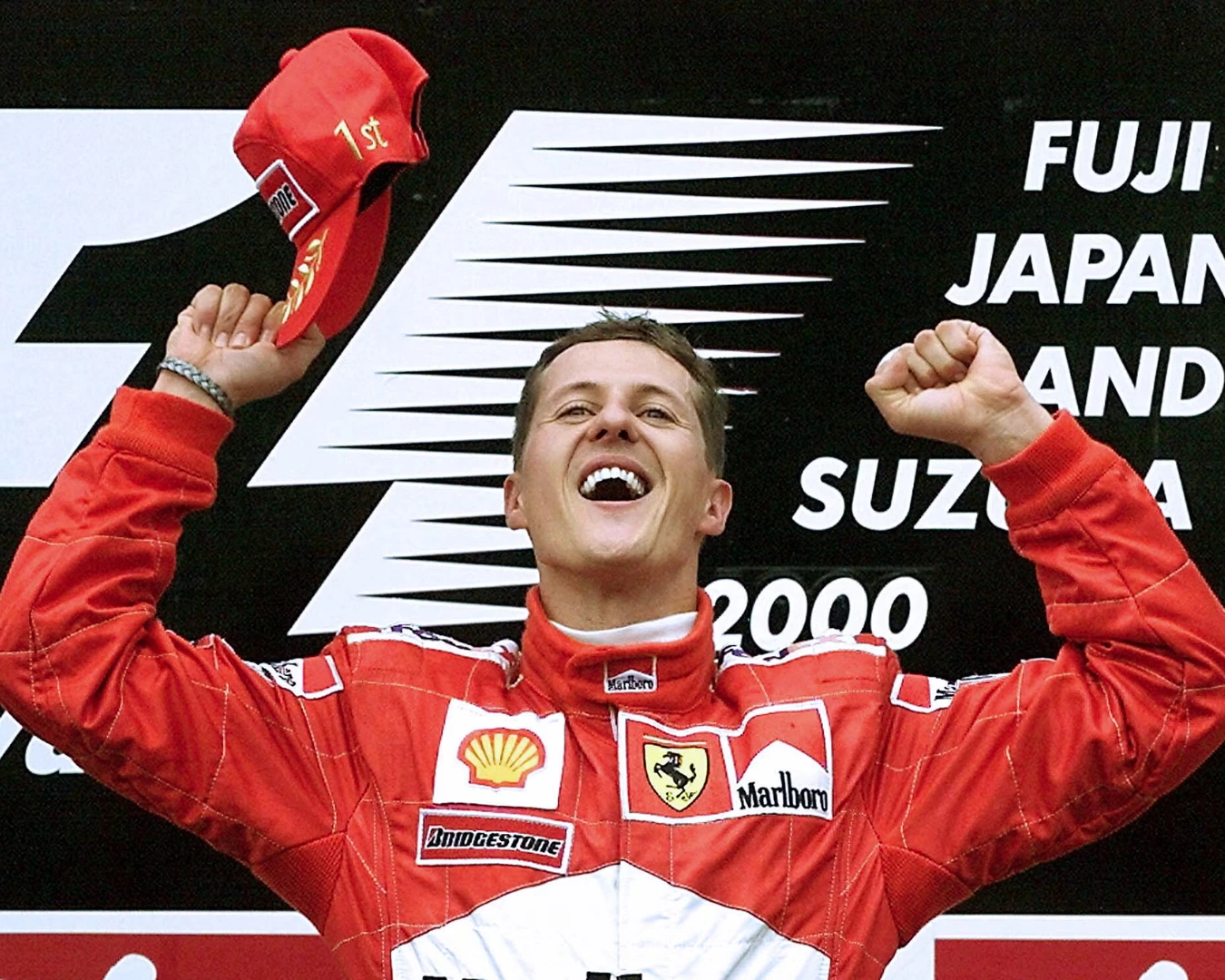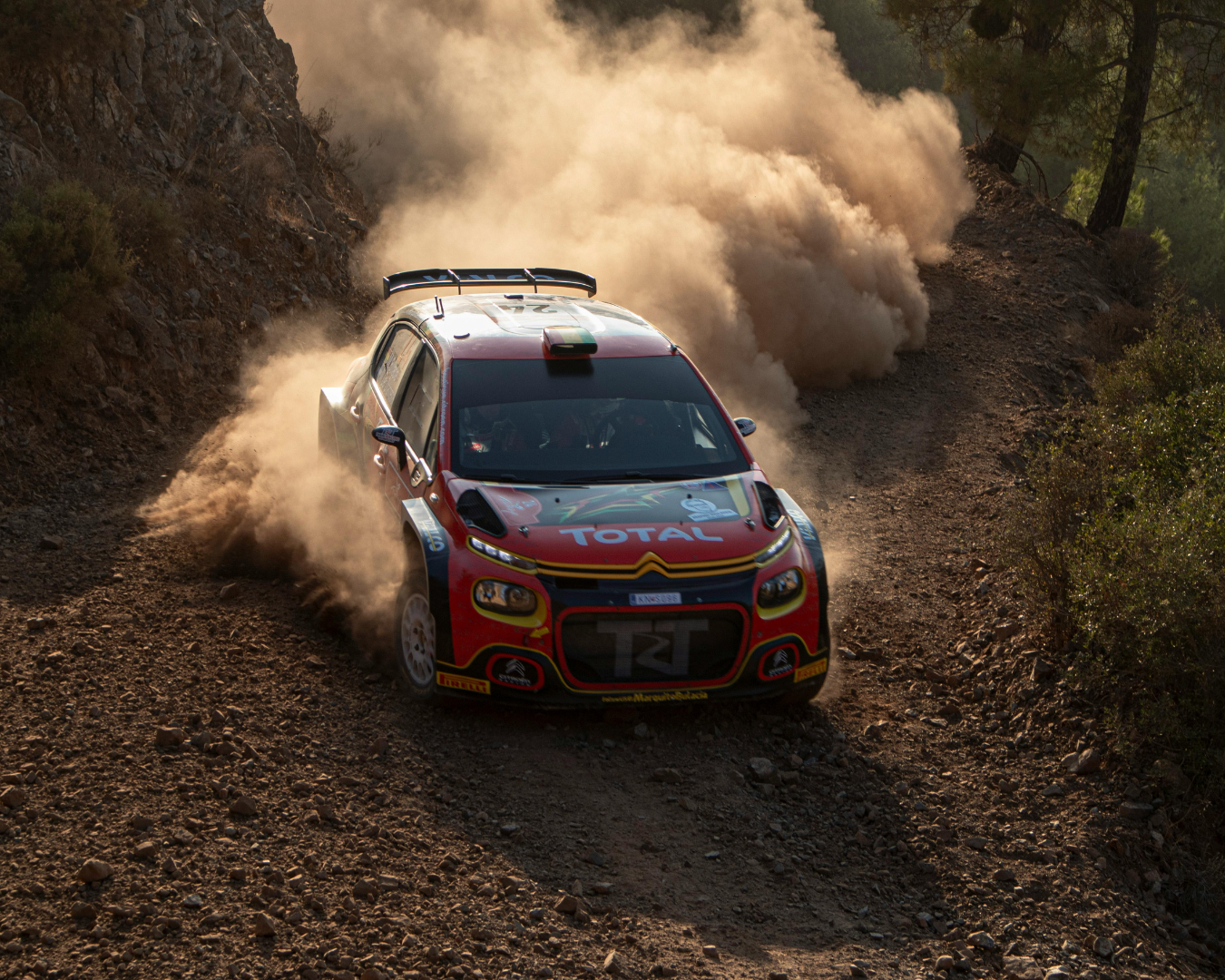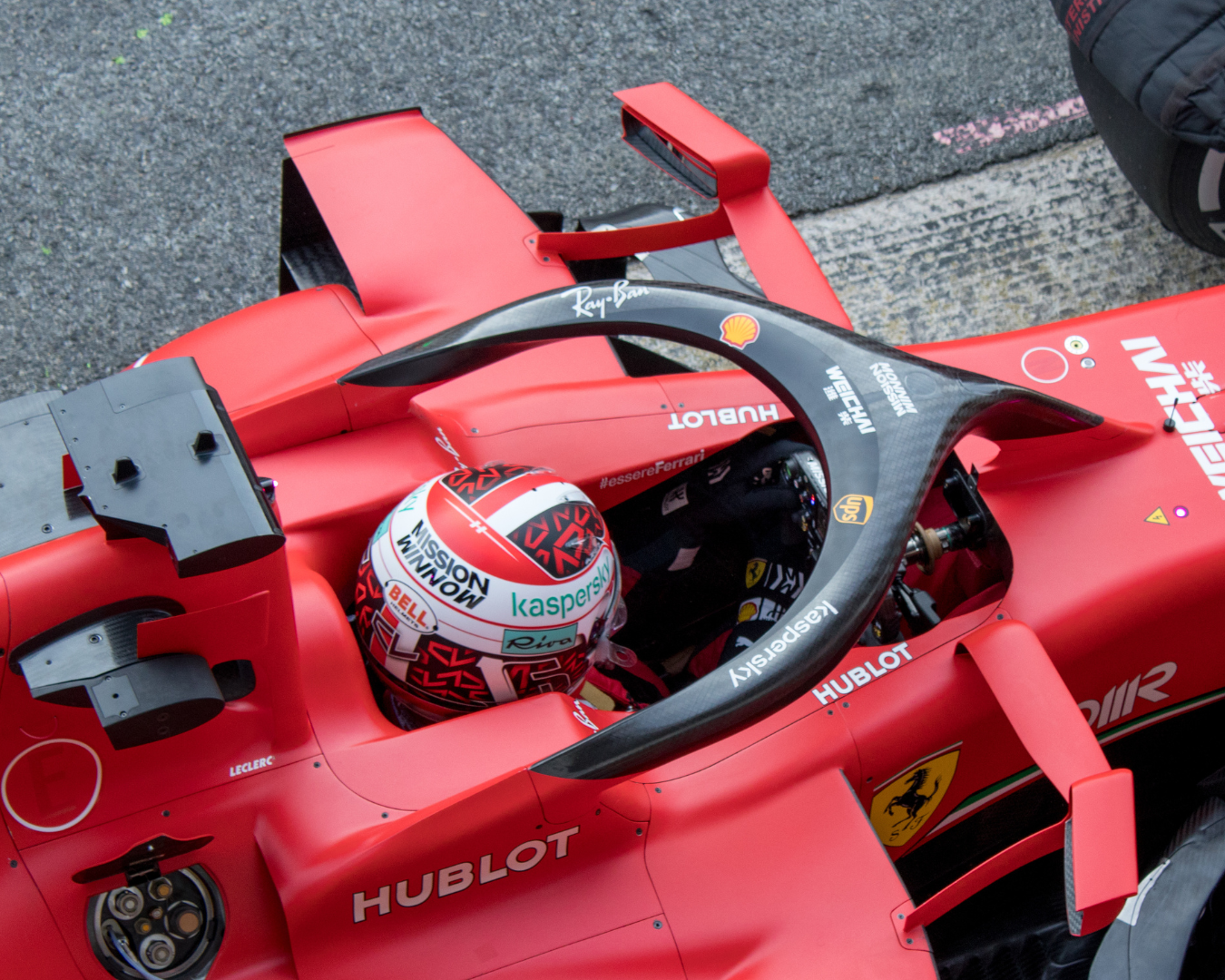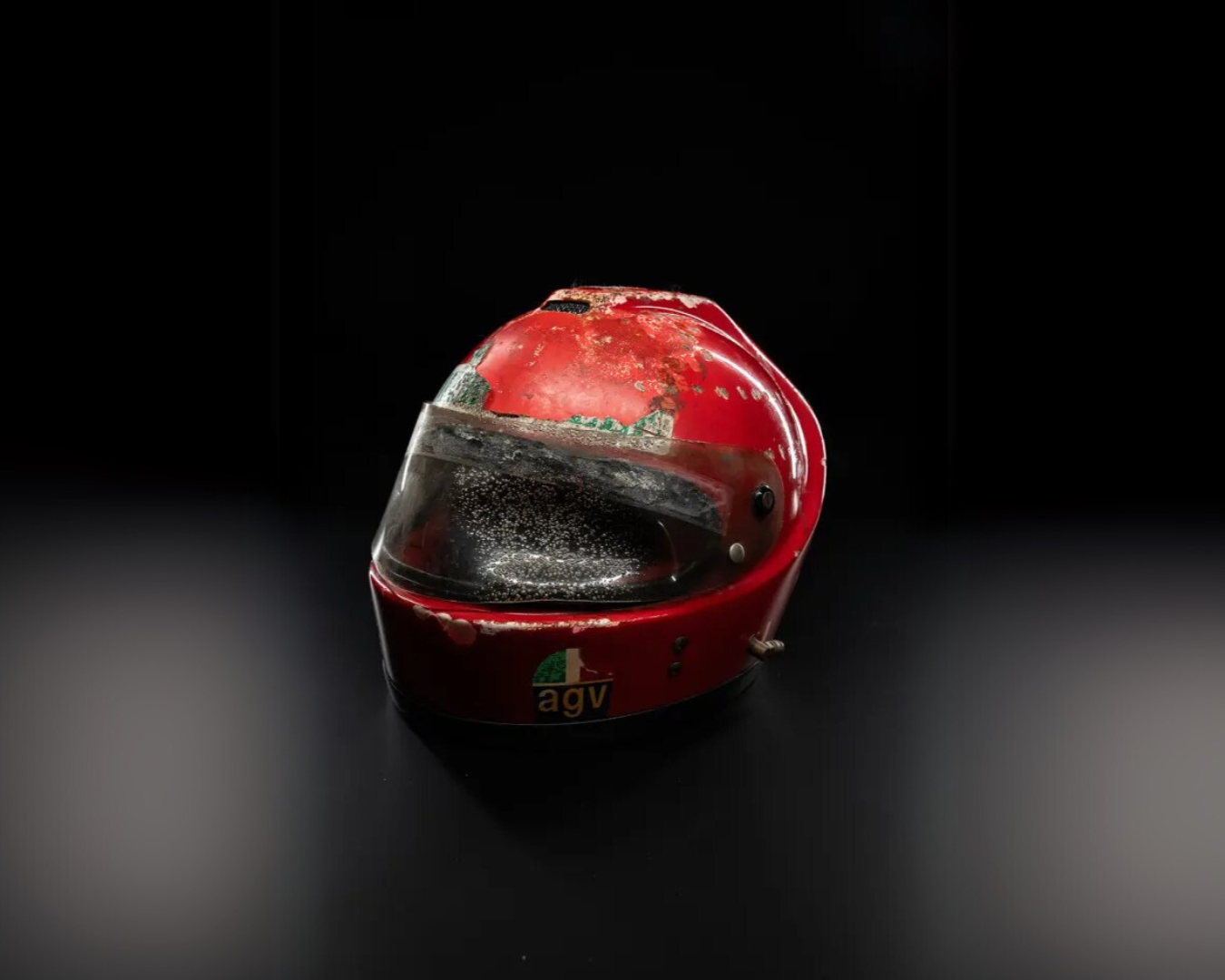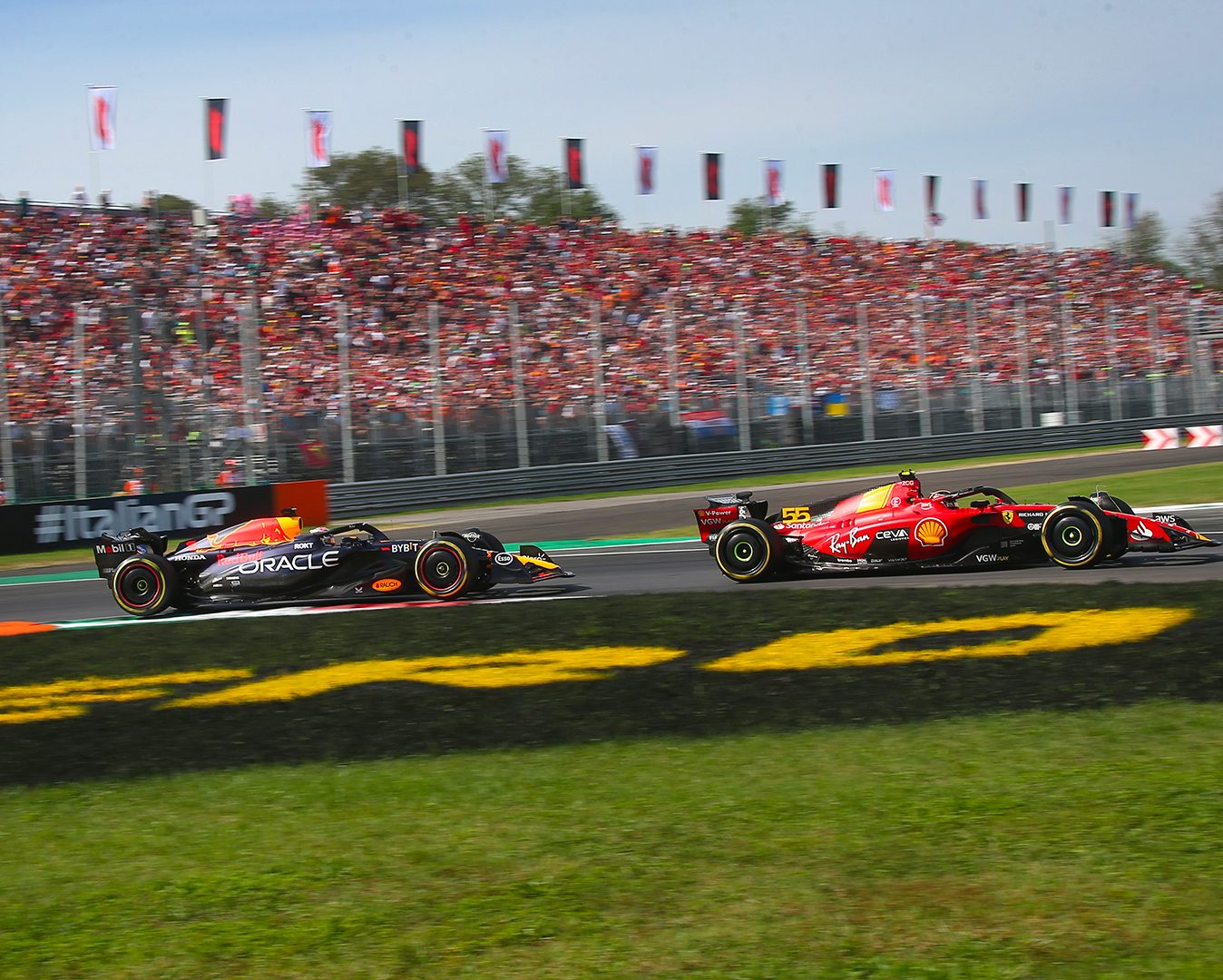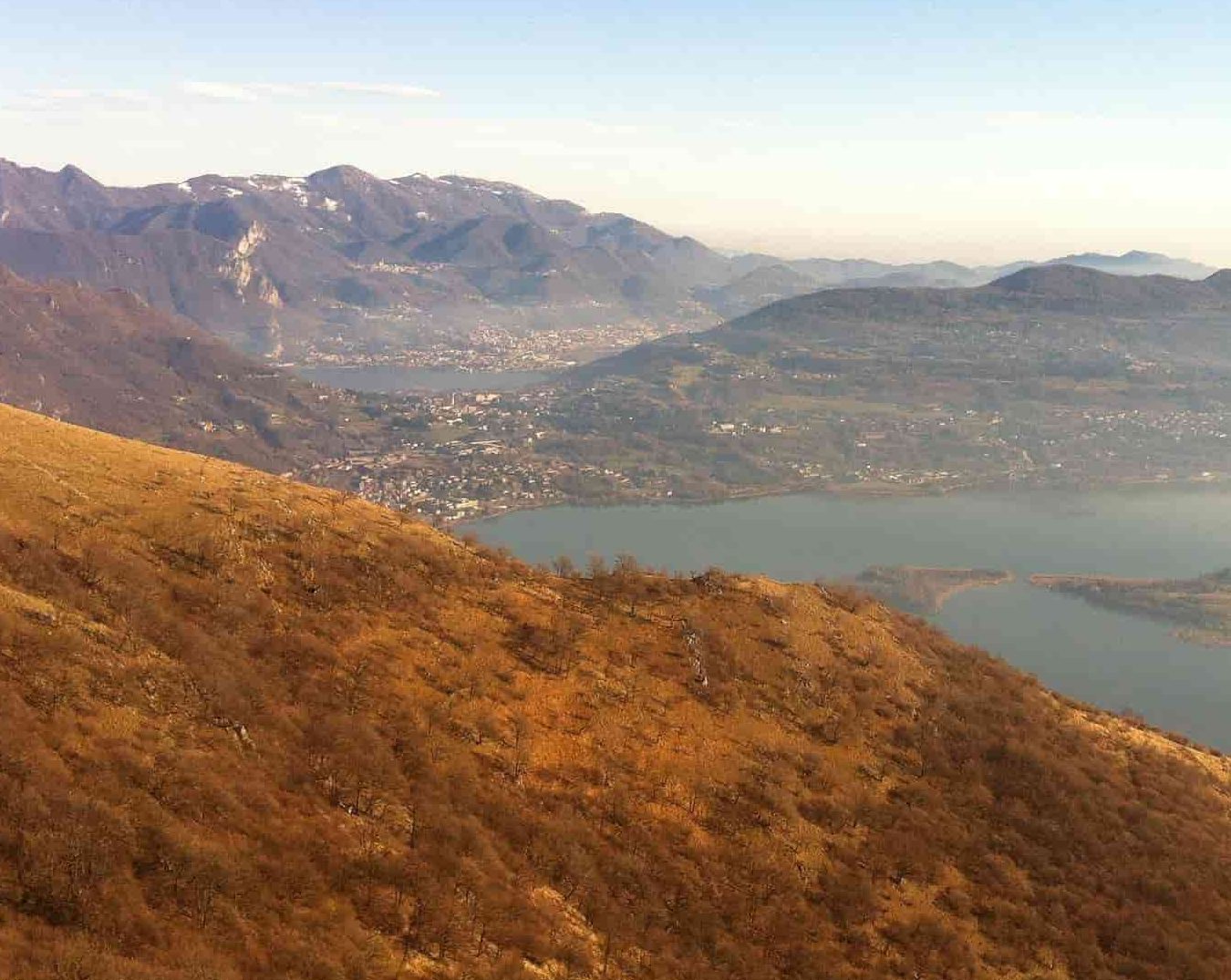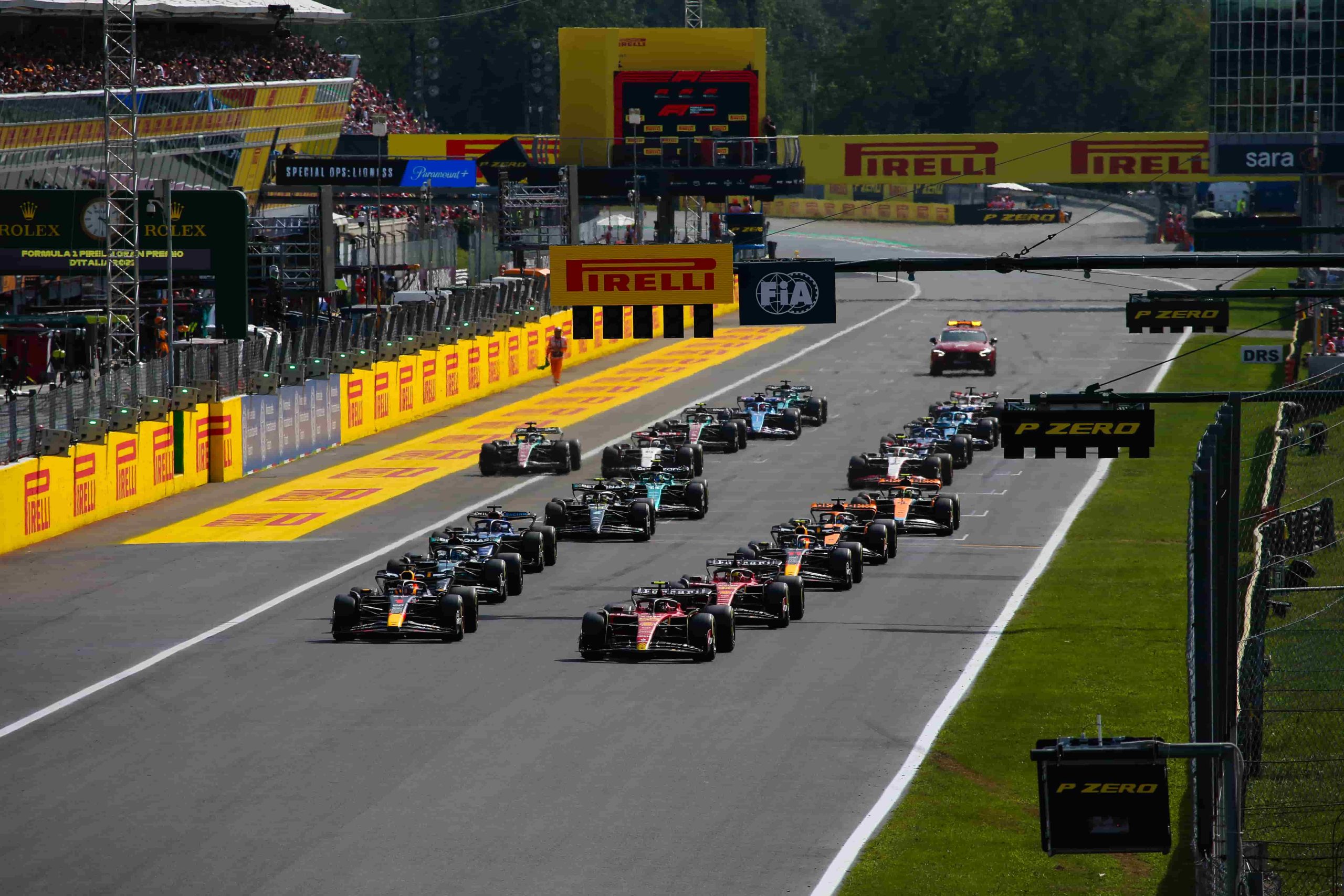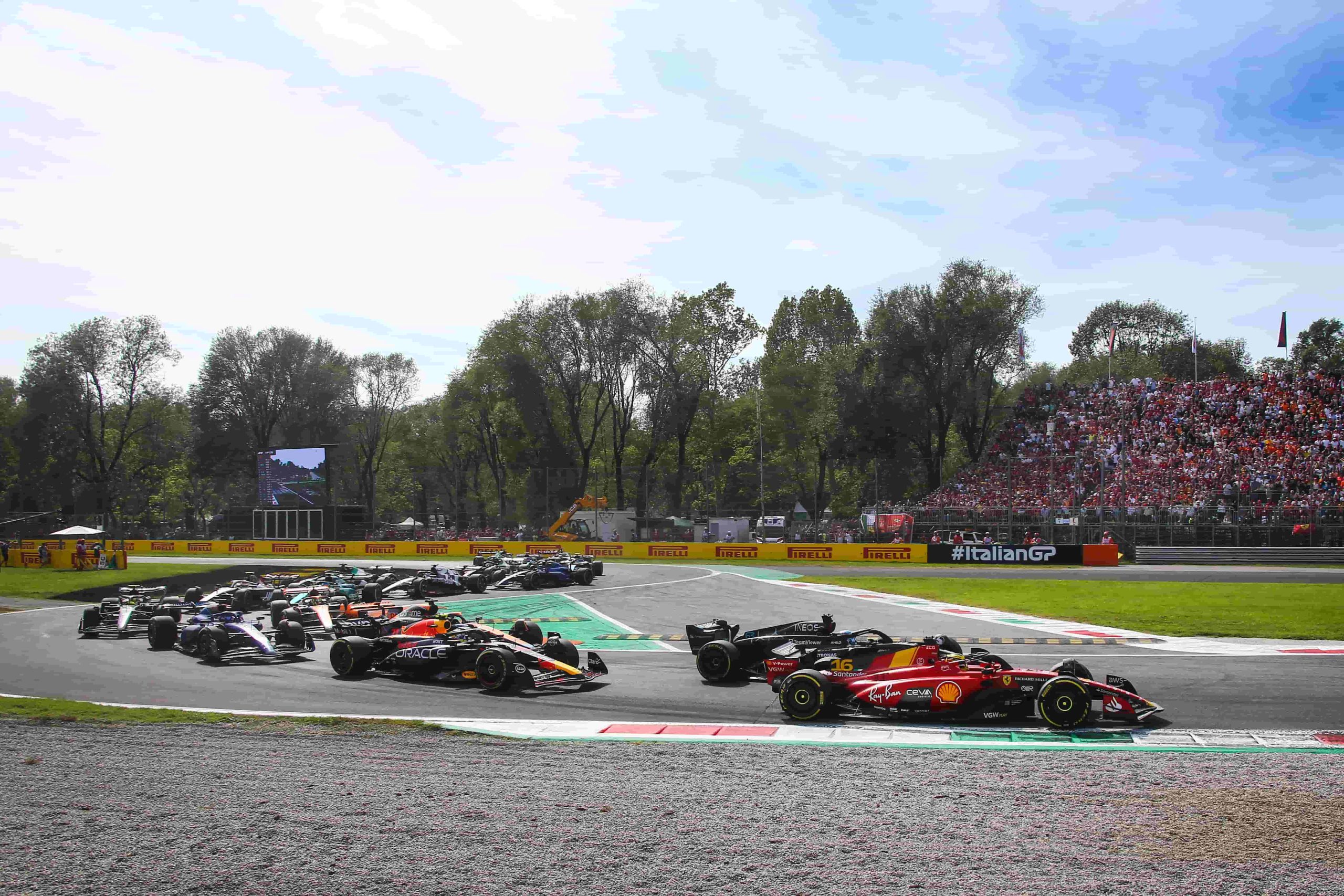Women in Formula 1: A tribute to the stars of the track
Women in Formula 1 have written extraordinary pages in motorsport history, challenging stereotypes and taking on a traditionally male-dominated world.
The role of women in Formula 1: a challenge to time
Formula 1, with its gripping races and legendary drivers, is often perceived as a world dominated by men. However, female participation in the championship has deep roots dating back to the early days of competition. Although few have made it to the top level, women in Formula 1 have proven that talent and passion know no gender. This article aims to pay tribute to the female protagonists who have competed in the championship, inspiring future generations.
The roll of honor of the Grand Prix in Monza
Maria Teresa de Filippis: the pioneer of women in Formula 1
In 1958, Maria Teresa de Filippis became the first woman to compete in Formula 1. The Neapolitan driver debuted in a Maserati 250F, facing world-class opponents. Although her participations were limited, Maria Teresa proved that women could also compete at the highest level, defying prejudice and convention.
Her best result was a tenth place in the Belgian Grand Prix, an extraordinary achievement at the time. Despite the difficulties, her presence in the championship marked a historic moment, paving the way for future female participation.
Lella Lombardi: The Legend of the Half Point
Lella Lombardi is, to this day, the only woman to have won points in Formula 1. Born in Frugarolo in 1941, Maria Grazia "Lella" Lombardi began her career as a touring car and karting driver, reaching Formula 1 in 1974.
Her most iconic moment came in 1975 at the Spanish Grand Prix. Despite a dramatic race marked by a serious accident, Lella finished in sixth place, earning half a rainbow point. This result remains an undefeated record, a symbol of his talent and determination.
After Formula 1, Lella founded a racing stable, dedicating himself to the growth of new talent and consolidating his legacy in motorsport.
Racing car movies: 10 unmissable titles for those who love cars and engines
Giovanna Amati: The Last Italian in Formula 1
Giovanna Amati was the last Italian woman to compete in Formula 1, in 1992 with the Brabham team. Born in Rome in 1959, her motorsport career had a difficult start, with a kidnapping interrupting her youth. Despite this, Amati made her way in the racing world, moving from Formula Abarth to Formula 3, before moving up to Formula 3000.
In 1991, after a test with Benetton, she got her chance in F1 with Brabham. Unfortunately, his inexperience and the team's technical meltdown had negative repercussions, and in the first three GPs of the season he failed to qualify. This led to his replacement by Damon Hill.
Although his Formula 1 adventure was short-lived, Amati continued to race, winning the Porsche Women's SuperCup in 1993 and participating in other competitions. Her career, unfortunately cut short prematurely, remains a symbol of determination and resilience in women's motorsport.
The future of women in Formula 1
Despite the difficulties, the landscape is changing. Initiatives such as the W Series, a women-only championship that has paved the way for the visibility of female talent, are attracting attention. Added to this is the recently launched F1 Academy, a platform dedicated to supporting young female drivers with the goal of facilitating their access to the highest categories of motorsport.
Drivers like Jamie Chadwick ( 3-time W Series Champion ) are proving that women can compete at the highest level. The hope is that, in the near future, we will see a significant return of women to the Formula 1 grid, not only as drivers, but also as engineers, managers and technicians.
Sports driving: what it is and how the courses work to learn it
Formula 1 flags and lights: complete guide to the meanings on the track
Flags and lights are essential tools for communication during a Formula 1 race. Each signal has a specific meaning that drivers and teams must interpret carefully.
In every Formula 1 Grand Prix, flags and lights are crucial in communicating crucial information about the track to drivers around the world. Each signal indicates something specific-from the presence of hazards to changes in the weather. But how can we, as spectators, interpret these signals to better understand what is happening on the track? Here's a guide so you can fully enjoy every race.
Precision and adrenaline come together in regularity car racing
The Flags of Formula 1
Flags in Formula 1 are essential tools for sending clear and timely directions to drivers. With unique colors and symbols, each flag is easily distinguishable even at high speeds. The most important ones include:
Red Flag
The red flag signals thatthe race has been stopped, usually due to a serious accident or compromised safety conditions. All drivers must stop in the pits or along the track, and the race does not resume until all safety conditions are met.
Yellow Flag
The yellow flag is one of the most important signals on the track. It indicates a danger in sight (e.g., an accident or a stopped vehicle) and drivers should slow down and not overtake. The yellow flag can be displayed in two ways:
- Yellow wave flag: The driver should reduce speed, avoid overtaking and prepare for a possible change of direction.
- Static yellow flag: It is shown in case of static danger in a specific area of the runway.
- Double yellow flag: Indicates a serious hazard, such as an accident partially or completely obstructing the track or the presence of marshals working on the track.
Green Flag
The green flag indicates that the track is clear of obstacles or hazards. It is usually shown after a red flag (race stoppage) or after an obstacle has been removed. Drivers can resume their normal speed and pace.
Blue Flag
The blue flag is shown when a driver is about to be overtaken by another driver who is faster and ahead in the standings. This warning, shown in the lapped stages, serves to inform the driver that he or she must give way to the faster driver. It is not a hazard warning, but an indication to facilitate safe overtaking.
Checkered Flag
The checkered flag is the signal that the race has come to an end. It is waved on the last pass of the race leader to indicate that the race is over.
Black Flag with Orange Disk
When a driver receives a black flag with an orange disc, it means that his vehicle has a serious technical problem that could compromise safety, and he must immediately withdraw from the race for safety reasons.
White Flag
The white flag signals a slow vehicle on the track, such as a recovery car or another driver facing difficulty. Drivers should pay attention to the situation, but not slow down drastically.
Black Flag
The black flag indicates the immediate disqualification of a driver from the race. It is a maximum and severe penalty, used only in cases of serious infractions or behavior not in accordance with the sporting regulations. The flag is always accompanied by a sign with the number of the driver concerned.
Get on board and discover the pure adrenaline rush of the track
The Lights of Formula 1
Lights are another vital communication tool in Formula 1.
Green Light
The green light indicates thestart of the race. When the light goes out, the drivers can start. This occurs after a sequence of red lights come on and then go off to mark the start.
Red Light
The red light is turned on to mark thestart of the countdown before the start. When all the red lights are on, the drivers must stand still on the grid. Once the lights go out, the race begins.
Blue Lights (Flashing Blue Light)
This light signals that a driver is about to be lapped and must give way. It is a communication similar to the blue flag, but often used when there are multiple drivers who may be involved in simultaneous lapping situations.
Yellow Light (Flashing Yellow Light)
When the flashing yellow light is activated, it means there is a dangerous situation on the track, similar to the yellow flag. Drivers should reduce speed and not overtake.
Red Light (Steady Red Light)
In the event of a race stoppage, a steady red light is illuminated. This warning serves the same purpose as the red flag and indicates that the race has been suspended.
On-track communication is one of the keys to success in Formula 1, and flags and lights are at the heart of this system.
What to give to a car enthusiast?
Michael Schumacher: the legend of Formula 1
With 7 world titles and 91 victories, Michael Schumacher is one of Formula 1's greatest icons. His extraordinary career has left its mark, with Monza often featuring the "Kaiser" in unforgettable feats.
Michael Schumacher is a name that resonates as synonymous with excellence in motorsport. With his incredible determination, his ability to adapt to technological changes and his unwavering commitment to improvement, Schumacher revolutionized the concept of a driver. The Monza circuit, the "home" of Ferrari, was one of the tracks where the German experienced some of his most memorable victories, further enhancing his status as an absolute icon of Formula 1.
The beginning of an extraordinary career
Michael Schumacher is considered one of the greatest drivers of all time. Born in Hürth, Germany, on January 3, 1969, he showed extraordinary talent for motorsport from an early age. His passion for speed began at age 4 on karts, a training ground that allowed him to hone his skills and catch the attention of international talent scouts. Making his Formula 1 debut in 1991 with the Jordan team, it did not take long for Schumacher to prove his worth.
Successes with Benetton and rise to Ferrari.
After his debut, Schumacher joined the Benetton team, where he won his first two world championships in 1994 and 1995. With these victories, the German driver established himself as a dominant force in the world of Formula 1. However, it was the move to Ferrari in 1996 that turned him into a legend. With the Maranello-based stable, Schumacher not only won five consecutive titles from 2000 to 2004, but brought the Prancing Horse back to the top of motorsport after 21 years. His dedication and ability to build a winning team around himself were crucial to Ferrari's successes.
The special bond between Schumacher and the Temple of Speed.
Monza has always held a special place in Schumacher's heart. With five victories at this iconic circuit, the German solidified his relationship with Italian fans, earning him the nickname Kaiser. His last victory at Monza in 2006, followed by the announcement of his first retirement, remains one of the most emotional moments in Formula 1 history.
Drive toward your dream to become a sports car driver
Technology and the cars that made history
One of the defining aspects of Schumacher's career has been his relationship with the technology of Formula 1 cars. Throughout his career, the cars he has raced in have been the protagonists of continuous evolution, and Schumacher has been a key element in this development.
In 1994, with the Benetton B194, the German won his first world title, a car distinguished by its refined aerodynamics and Ford V8 engine. However, it was with the Ferrari F2002 that Schumacher reached one of his technical heights, thanks to its extremely rigid chassis and V10 engine that allowed him to dominate the 2002 season. In particular, the F2004 is considered one of the highest-performance cars ever built, as well as the most successful car produced by the Maranello-based team. With a Ferrari 053 V10 engine that generated about 900 horsepower, combined with the electronic control system and active suspension control, the F2004 represented the pinnacle of technology at the time. This level of innovation allowed Schumacher to win 13 of the season's 18 races, cementing his reputation as one of the most accomplished drivers.
Michael Schumacher's legacy in motorsport
Schumacher's contribution to Formula 1 goes beyond his impressive records including seven world titles, 91 victories and 68 pole positions. He redefined the concept of the professional driver, raising the level of physical and mental preparation to new standards. His influence is still reflected today in his training methods and technical development of cars.
A key aspect of his career was his meticulous approach to physical and mental preparation. Schumacher was among the first to introduce rigorous physical training and continuous monitoring of drivers' psychological performance, helping to change the approach to a driver's preparation.
Despite his unfortunate absence from public scenes due to a skiing accident in 2013, Michael Schumacher remains a symbol of excellence and determination.
Behind the scenes of training an F1 driver
The problem of hybrid cars in Rallying: what went wrong in the WRC
Rally1 rally cars have been a great technological experiment, but their future, at least for the time being, is already sealed. Why has this innovation failed to establish itself in the WRC?
The introduction of hybrid cars in the World Rally Championship (WRC) in 2022 was hailed as a momentous breakthrough. At last, this category of motorsport was also marrying sustainability without sacrificing spectacularity. However, less than three years after its debut, the hybrid system is about to be shelved. Starting in 2025, Rally1s will revert to being cars with traditional thermal engines, marking the end of an interlude that has left more questions than answers. But what went wrong?
The promising start of hybrid rally cars
The Rally1 hybrids were equipped with a plug-in system capable of delivering a 100 kW (134 horsepower) boost through an electric motor powered by a 3.9 kWh battery. This system, combined with the classic 1.6-liter turbo gasoline engine, promised to combine power, speed and sustainability.
The hybrid has brought impressive performance, with the Rally1s proving to be among the fastest cars ever in the WRC. However, the increase in power meant a significant increase in development and operating costs. Here began the disillusionment.
Learn more about the world of rallying and its characteristics
Early problems between cost and technical complexity
One of the main obstacles was the budget required to develop and maintain the hybrid system. The technology, designed by supplier Compact Dynamics, was innovative but expensive. Its impact was felt mainly by private teams and those with limited resources, making the championship less affordable. In addition, system malfunctions were frequent: drivers often complained about the need to reset the system during races, a problem that undermined confidence in the hybrid.
Even major manufacturers, such as Toyota and Hyundai, struggled to balance costs. Citroën's untimely exit exacerbated the situation, leaving a vacuum that further complicated the championship's financial model. Although the FIA attempted to support the teams financially, the results were not enough to ensure the survival of the project.
Don't miss the big events in Monza: technology and speed await you
Why did hybrid rally cars fail?
The hybrid proved ill-suited to the unique context of rallying, where extreme conditions demanded simplicity and reliability. Although the system was capable of improving performance, its complexity often overshadowed the benefits. Managing the extra weight introduced by the battery and electric motor was a further disadvantage, negatively affecting the cars' agility.
Despite initial ambitions, electrification in rallying has shown its limitations. Unlike other motor sports such as Formula E, where electric is the absolute protagonist, rallying requires technologies that can cope with a variety of surfaces, weather conditions, and long distances without any margin for error.
Explore the sustainable initiatives of the Monza National Autodrome
A glimpse into the future
From 2025, the WRC will return to exclusively thermal cars, but with some important changes. The cars will be lighter due to the removal of the hybrid system, with reduced power to ensure greater sustainability and affordability. In addition, the introduction of 100% sustainable fuels will maintain the championship's commitment to ecology, without the technical complications of electrification.
This transition represents a pragmatic choice. By eliminating the complexity of the hybrid, the WRC aims to reduce costs, simplify operations, and ensure fairer competition among teams. The challenge will be to maintain the spectacularity and audience appeal that are key to the success of the sport.
Lessons for motorsport
The experience of hybrid in the WRC teaches us that not all technological innovations are suitable for every context. Although electrification is a must for the automotive industry, motorsport requires tailored solutions that balance performance, sustainability, and economy.
With the transition to thermal cars from 2025 and further regulatory evolutions planned for 2026, the WRC is preparing to write a new chapter. Despite the abandonment of the hybrid, rallying remains a sport capable of adapting and innovating, preserving its spectacular essence and continuing to thrill fans around the world.
The technological future of the automotive industry
Halo system in Formula 1 | A revolution for driver safety
The introduction of the Halo system in Formula 1, protection that has changed the way drivers deal with the risk of serious injury, is proof that safety has always been a key priority in motorsport. Over the years, technology has helped make tremendous progress in this area, and this system represents one of the most significant developments in recent years.
What is the Halo system?
The Halo system is a driver's head protection device that was made mandatory in Formula 1 in 2018. It is a titanium structure surrounding the top of the cockpit designed to protect the driver's head from side or frontal impacts during an accident. The Halo System was developed to meet specific safety requirements, specifically to protect against debris that may enter the head area or impacts with other vehicles. Its minimalist but robust design initially drew much criticism from riders and fans, but its effectiveness was later widely demonstrated.
The benefits of the Halo system in Formula 1
The introduction of the Halo system has had a positively significant impact on the safety of Formula 1 drivers. The device was designed to withstand incredible forces, up to 12 tons, without compromising the driver's visibility or agility while driving. Thanks to this system, it was possible to significantly reduce the risk of serious head injuries by providing unprecedented protection. In addition to physical protection, Halo has also helped change the mindset in motorsport, pushing for continuous improvement in car safety.
Take the course to become a responsible pilot
Romain Grosjean's miraculous rescue
A glaring example of the effectiveness of the Halo system occurred during the Bahrain Grand Prix in 2020. Driver Romain Grosjean, on board his Haas, had a terrible accident; after Daniil Kvyat's AlphaTauri touched his single-seater, the French driver crashed into the barriers, leading the No. 8 VF-20 to break into two parts, with the front one enveloped in a cloud of fire. Although the vehicle was destroyed and on fire, Grosjean managed to save himself thanks to the integrity of the car's survival cell, reinforced by the Halo system. This incident demonstrated without a shadow of a doubt how crucial the system is for safety. The driver was able to exit the vehicle on his own, without head damage, and suffered only minor hand burns and injuries. The incident received worldwide media attention, with many recognizing the critical role of the Halo system in protecting the pilot's life.
Gran Turismo Automobili, the myth hidden behind the GT abbreviation
Max Verstappen and Lewis Hamilton at Monza.
Another example of the effectiveness of the Halo system occurred just during the 2021 Italian Grand Prix. In this race, Max Verstappen and Lewis Hamilton were involved in a spectacular accident, with Verstappen's Red Bull landing on top of Hamilton's Mercedes. Fortunately, both drivers managed to emerge unharmed thanks to the adoption of the Halo system, which prevented the direct impact from damaging Hamilton's head. This incident further confirmed the value of the device in protecting Formula 1 drivers, even in seriously dangerous situations.
An essential device for pilot safety
The Halo system has been a real revolution in the safety of Formula 1 drivers. Since it was introduced, it has saved several lives, protecting drivers during accidents that could have been fatal without it. While initial criticism was about its aesthetics, today it is undeniable that the Halo system is one of the greatest safety achievements in motorsport.
9 interesting facts about the Autodromo Nazionale di Monza and Formula 1
Niki Lauda's helmet: the strange reappearance
The helmet Niki Lauda wore during the tragic 1976 crash at the Nürburgring is not only a piece of history, but a true symbol of strength and resilience. This helmet, damaged by flames and subsequently stolen for 37 years, has finally been returned to motorsport history.
The dramatic accident
August 1, 1976 is a date etched in the memory of Formula 1 fans. During the German Grand Prix, Niki Lauda, at the wheel of his Ferrari 312 T2, was the victim of a terrible accident. His car skidded and caught fire at Bergwerk corner, the point on the circuit farthest from the pits, trapping the driver in an inferno of flames. Lauda suffered severe burns and injuries that could have ended his career. However, against all odds, he returned to the track only 42 days later. The helmet he wore that day, badly damaged, has become a symbol of the courage and determination that defined his legend.
From 1922 to the present, the history Autodromo Nazionale Monza
Theft and discovery of Niki Lauda's helmet
After the accident, Niki Lauda's helmet was kept by Gino Amisano, founder of the AGV company. However, in 1987, during an event in Milan, it mysteriously disappeared. For decades, its fate remained shrouded in mystery, fueling speculation among collectors and fans. Only in the spring of 2024 did the helmet reappear during an auction in Miami, with a starting price of $60,000. The Dainese Group, owner of the AGV brand, managed to recover it, bringing it back to Italy. This precious heirloom was displayed in 2024 at Eicma, in Milan, as a tribute to one of the icons of Formula 1.
10 curiosities about Formula 1
Niki Lauda's helmet is not just history
The AGV X1 helmet, with its iconic red livery, is not just a museum piece. Signs of fire, such as ruined paint and a warped visor, tell a story of challenges overcome. This object represents a pivotal moment in Formula 1 safety, marking the beginning of an era when attention to driver protection became a priority. Today, Niki Lauda's helmet is part of the DAR (Dainese Archive), a permanent collection celebrating advances in dynamic sports safety. An heirloom that invites fans to reflect on the importance of technology in racing.
The legacy of a symbol
Lauda's accident had a significant impact on the development of safety standards. The changes introduced in helmets, fire suppression systems, and circuit structures find their roots in that tragedy. Niki Lauda not only changed the way we approach racing, but also inspired generations of drivers and engineers to pursue higher standards of protection. For motorsports fans, Niki Lauda's helmet is a tangible reminder of how courage and technology can go hand in hand.
Join an exclusive tour of the Monza National Autodrome
Formula 1 2024, results and rankings of the longest world championship in history
The 2024 Formula 1 World Championship has officially started. In this article, the complete race calendar with all the winners and the constantly updated driver and manufacturer rankings.
The 2024 Formula 1 World Championship will be the longest in history . The calendar of events, in fact, will include 24 grand prix , starting on March 2 in Bahrain and concluding on December 8 in Abu Dhabi . The 2023 Championship should have already reached this record level but the cancellation of the Chinese GP and the cancellation of the Emilia-Romagna GP due to floods had reduced the scheduled races to 22. For 2024, however, things will start to rise again, because both circuits are back in the equation. Here are all the appointments .
The official calendar of the 2024 Formula 1 World Championship and the winners of each Grand Prix
-
Bahrain Grand Prix – Sakhir - 02 March - Verstappen on Red Bull
-
Saudi Arabian Grand Prix – Jeddah - 09 March - Verstappen on Red Bull
-
Australian Grand Prix – Melbourne - 24 March - Sainz on Ferrari
-
Japanese Grand Prix – Suzuka - 07 April - Verstappen on Red Bull
-
Chinese Grand Prix – Shanghai - 21 April - Verstappen on Red Bull
-
Miami Grand Prix – Miami - 05 May - Norris on McLaren
-
Emilia-Romagna Grand Prix – Imola - 19 May - Verstappen on Red Bull
-
Monaco Grand Prix – Monaco - 26 May - Leclerc on Ferrari
-
Canadian Grand Prix – Montreal - 09 June - Verstappen on Red Bull
-
Spanish Grand Prix – Barcelona - 23 June - Verstappen on Red Bull
-
Austrian Grand Prix – Spielberg - 30 June - Russel on Mercedes
-
British Grand Prix – Silverstone - 07 July - Hamilton on Mercedes
-
Hungarian Grand Prix – Budapest - 21 July - Piastri on McLaren
-
Belgian Grand Prix – Spa – July 28 – Hamilton on Mercedes
-
Dutch Grand Prix – Zandvoort - 25 August - Norris on McLaren
-
Italian Grand Prix – Monza – 01 September – Leclerc on Ferrari
-
Azerbaijan Grand Prix – Baku – September 15 – Piastri on McLaren
-
Singapore Grand Prix – Singapore – September 22 – Norris on McLaren
-
United States Grand Prix – Austin - 20 October
-
Mexican Grand Prix – Mexico City - 27 October
-
Brazilian Grand Prix – Sao Paulo - 03 November
-
Las Vegas Grand Prix – Las Vegas - November 23
-
Qatar Grand Prix – Losail - 01 December
-
Abu Dhabi Grand Prix – Yas Marina - 08 December
Drivers ranking
- Verstappen M. - Red Bull - 331 points
- Norris L. - McLaren - 279 points
- Leclerc C. - Ferrari - 245 points
- Piastri O. - McLaren - 237 points
- Sainz C. - Ferrari - 190 points
- Hamilton L. - Mercedes - 174 points
- Russell G. - Mercedes - 155 points
- Perez S. - Red Bull - 144 points
- Alonso F. - Aston Martin - 62 points
- Stroll L. - Aston Martin - 24 points
- Hulkenberg N. - Haas - 24 points
- Tsunoda Y. - Rb - 22 points
- Albon A. - Williams - 12 points
- Ricciardo D. - Rb - 12 points
- Gasly P. - Alpine - 8 points
- Bearman O. - 7 points
- Magnussen K. - Haas - 6 points
- Ocon E. - Alpine - 5 points
- Colapinto F. - Williams - 4 points
- Zhou G. - Stake F1 Team Kick Sauber - 0 points
- Bottas V. - Stake F1 Team Kick Sauber - 0 points
- Sargeant L. - Williams - 0 points
Manufacturers ranking
- McLaren - 516 points
- Red Bull - 475 points
- Ferrari - 441 points
- Mercedes - 329 points
- Aston Martin - 86 points
- Rb - 34 points
- Haas - 31 points
- Williams - 16 points
- Alpine - 13 points
- Stake F1 Team Kick Sauber - 0 points
The drivers of the 2024 Formula 1 World Championship
Even on the drivers' side, the 2024 World Championship marks an unprecedented record, with the collective confirmation by all the teams of the athletes taking to the track in 2023 .
Haas
-
Kevin Magnussen – confirmed
-
Nico Hulkenberg – confirmed
Red Bull
-
Max Verstappen – confirmed
-
Sergio Perez – confirmed
Aston Martin
-
Fernando Alonso – confirmed
-
Lance Stroll – confirmed
McLaren
-
Oscar Piastri – confirmed
-
Lando Norris – confirmed
AlphaTauri
-
Daniel Ricciardo – confirmed
-
Yuki Tsunoda – confirmed
Williams
-
Sargeant
-
Alexander Albon – confirmed
Ferrari
-
Charles Leclerc – confirmed
-
Carlos Sainz – confirmed
Mercedes
-
Lewis Hamilton – confirmed
-
George Russell – confirmed
Alpine
-
Pierre Gasly – confirmed
-
Esteban Ocon – confirmed
Sauber
-
Valtteri Bottas – confirmed
-
Zhou Guanyu – confirmed
Getting to know Brianza, a short guide in 7 questions
Short guide to discover Brianza, a pocket of Italy with ancient history. Who originally inhabited this area? What are its cultural, landscape and food and wine beauties? What is the best time to visit? How do you get to Brianza? All the answers in this study. Rich in history, culture and wonderful landscapes, Brianza is a true jewel of Northern Italy , a fascinating place that deserves to be discovered. In every season, Brianza is ready to welcome Italian and foreign tourists, to give them a journey in which art and nature, tradition and future, beauty and taste mix . Here is a short guide designed for those who are planning a trip to Brianza and would like to know more.
What is Brianza and where is it located?
Brianza is a geographical area located in northern Italy, between the cities of Milan, Como, Lecco and Bergamo . It is known above all for its fascinating hilly landscape , rich in greenery and populated by small lakes, woods and agricultural areas. It is not the landscape alone, however, that exhausts the potential of Brianza, which over the years has also established itself as an important industrial district , crossed as it is by a dense network of small and medium-sized businesses, active above all in the furniture and fashion sectors. . Not to mention the historical and cultural richness of this region, which houses many sites of artistic and architectural interest, as well as well-rooted local traditions. If we want to trace more precise boundaries of Brianza , it is possible to identify them as follows, referring to the oldest delimitation (attributed to the essayist Ignazio Cantù):
- to the north, the Vallategna waterfall;
- to the south, the northern walls of Monza;
- to the east, Lake Garlate, Lake Olginate and the Adda river;
- to the west, the Seveso river.
Within itself, Brianza can be further divided into three areas :
- the Upper Brianza of Como;
- the Upper Brianza area of Lecco;
- Lower Brianza.
What are the main cities of Brianza?
As mentioned, Brianza is dotted with cities and towns of great importance, as well as numerous sites of archaeological, historical and cultural interest. Among the most important inhabited centers are:
- Monza . Capital of the province of Monza and Brianza, it is a city with an ancient and glorious history and a vast cultural heritage. It is famous, among other things, for the Autodromo Nazionale, home of the Italian Formula 1 Grand Prix, and for the Villa Reale, an architectural jewel that rivals the Royal Palace of Caserta and that of Versailles.
- Lecco . Located on the shores of Lake Como, it is known for its splendid mountain landscape which inspired Alessandro Manzoni in his novel "I Promessi Sposi". It is also an important center for the metallurgical and mechanical industries.
- How . Although only part of the city extends into Brianza, it is a point of reference for the region thanks to its world-famous lake and its silk industry.
To these three pearls there are many others, among which the municipalities of Seregno , famous for the production of wood and furniture, Lissone , a hub of design and furnishings, Cesano Maderno , a true architectural jewel, and Cantù , also known for its basketball team, deserve to be mentioned.
What are the origins of the Brianza hill?
The hills of Brianza , which enchant so many tourists, are the result of a series of extremely ancient geological processes. It is estimated, in fact, that their origin dates back to the period between the Tertiary and Quaternary, approximately from 66 million to 2.6 million years ago . In particular, during the Tertiary period, Brianza underwent an uplift due to the tectonic pressures associated with the collision between the African and European plates. Thus the pre-Alps but also the hills of Brianza were formed. Subsequently, the erosion of the rocks and the deposition of sediments carried by watercourses further shaped the landscape, creating the soft hilly forms typical of this area.
What are the main elements of the history and culture of Brianza?
To learn about and briefly retrace the history of Brianza, it is useful to start from the etymology of its name , which reveals its origins. According to the most accredited reconstruction, in fact, Brianza derives from brig , which in the Celtic language means hill . Another hypothesis, however, connects the name of the region to that of Brianteo, general of the troops of Belloveso, king of the Gauls and legendary founder of Milan, according to Livy. Whatever the truth, the data that emerges from these two possible reconstructions is that already in pre-Roman times , Brianza was a lively and growing territory , in which the first cultural manifestations are closely linked to the presence of peoples from Northern Europe. The golden period of this area, however, coincides with the Middle Ages and the domination of the Lombards, who proved to be very linked to Brianza. Above all, the figure of Queen Teodolinda stands out, who brought great lustre to the city of Monza, where the famous Iron Crown (which is located inside the Museum of the Cathedral of Monza ) is still kept, in which a nail from the cross of Christ is set and with which the Kings of Italy were crowned for many years. The Renaissance period, however, is the period in which the numerous Ville di Delizia flourished, that is, the summer residences of the most prominent noble families that characterise this area and are today an unmissable tourist attraction.
What to see and what to do in Brianza
What are the typical dishes of Brianza?
The food and wine tradition of Brianza cuisine reflects the characteristics of the landscape and society: a rural area characterized by rolling hills and numerous lakes. The result is a poor but substantial cuisine . The recurring and distinctive elements in Brianza dishes are undoubtedly rice , polenta and pork . Very tasty, for example, is the risotto with luganega , a particular sausage typical of the area, recognizable by its thin and elongated appearance. Another undisputed queen of Brianza tables is cassoeula , a dish obtained by assembling the less noble parts of the pig, combined with stewed vegetables and polenta. How can we not mention a whole series of dishes with a long tradition: rusticiada (pork stew), panmoijaa (soup with lard and bacon), minestrone Brianza (with rice, cabbage, lard, beans and potatoes) and Tripe . Among the sweets, the bread of San Gerardo stands out, named after the co-patron saint of Monza: made with sugar, honey, fruit, sultanas, almonds and candied chestnuts.
What is the best time to visit Brianza?
Brianza is ready to welcome tourists all year round , offering, in different seasons, different leisure opportunities, mixing art, culture and nature. Spring and autumn are certainly the most suitable seasons , because they are characterized by mild temperatures and nature that shows itself in all its splendor. Even in summer, however, the temperatures remain pleasant and the entire Brianza area is filled with traditional events, festivals of various kinds and popular initiatives. Finally, winter is perfect for those who love more intimate atmospheres and are not afraid of cold temperatures. In this season, in fact, many sites of cultural interest can still be visited but are much less crowded than at other times.
How to get to Brianza?
Getting to Brianza is relatively simple , given its proximity to Milan and its good connection with other parts of Lombardy. For those traveling by car , it is possible to use the A4 motorway (Milan-Brescia) or the A8/A9 motorway (if you come from above Varese or Como). Then there are numerous provincial and regional roads that offer easy access to many of the cities and towns of Brianza. Another possibility is the train , given that the area is also served by several railway lines . The main stations are those of Monza, Lecco and Como. All these cities are easily reachable from Milan with regional trains that depart frequently from the Central Station. Therefore it is possible to use the Lombard capital as a bridge to access Brianza. Furthermore, from Monza station it is possible to take local buses or trains that allow you to reach other Brianza destinations. Finally, for international visitors or those coming from more distant areas of Italy, the plane option is available. The closest airport is Milan Linate, followed by Milan Malpensa and Bergamo Orio al Serio. From these airports, you can then rent a car or take a train or bus to reach Brianza.
Are you in Brianza? Come and discover the Monza National Autodrome
Tests of the 2024 Formula 1 World Championship, how did they go?
The 2024 Formula 1 World Championship winter testing was held in a single event in Sakhir, Bahrain, from 21 to 23 February. Here's how they went and what were the results recorded on the track by the new single-seaters, presented just a few days ago. Every year, the lead-up to a new Formula 1 season is marked by two fundamental stages: the presentations of the new single-seaters and the winter tests . In particular, the latter represent a sort of dress rehearsal for the Formula 1 World Championship , the only official opportunity for the ten teams to refine the feeling between car and drivers before the start of the season. It is normal, therefore, that the eyes of insiders and enthusiasts are focused precisely on the tests, which heat up the atmosphere and increase curiosity for the start of the new championship.
The 2024 Formula 1 winter testing schedule
This year too, however, four-wheel fans, as already happened in 2023, had to settle for just one appointment for the Formula 1 winter tests, instead of the two scheduled for the 2022 season. The 2024 Formula 1 World Championship , in fact, is already upon us (it will start on March 2) and will be the longest in history. There was therefore little time to test the new single-seaters, given that the presentations ended in mid-February . For this reason, the only winter tests for Formula 1 2024 were held from 21 to 23 February in Bahrain , precisely on the Sakhir track, the same one that will host the first Grand Prix of the season.
What to give to a Formula 1 fan?
All test results from the 2024 Formula 1 World Championship
Formula 1 fans know it well: the results of winter tests should always be taken with a pinch of salt , because they can be misleading. In fact, there are many possibilities for teams to "bluff" to maintain an aura of mystery about their strengths and especially their weaknesses until the moment of the first Grand Prix. However, this does not mean that the tests cannot provide some useful information for imagining the Championship to come . From this point of view it is therefore legitimate to ask what the laps of the track done by the single-seaters in Bahrain revealed. The final time classification reveals a Ferrari capable of taking home the virtual front row: first Sainz , who stopped the clock of his fastest lap under a minute and a half (1'29''921), second Lecrerc , who stopped just above (1'30''322). Followed by Russell on Mercedes (1'30''368), Zhou on Sauber (1'30''647) and Perez and Verstappen on Red Bull (with 1'30''679 and 1'30''755 respectively). In the three days of Sakhir there were different simulations both on the "flying lap" and on the race pace. Only the start of the season will reveal who has come closest to 3-time World Champion Max Verstappen and Red Bull. Formula 1 - Italian Grand Prix 2024 The original contents of this article are produced by an external service without any involvement of the press office of the Autodromo Nazionale Monza.
Presentations of the Formula 1 single-seaters, the complete calendar for 2024
In the first half of February, the teams competing in the 2024 Formula 1 World Championship will present the new single-seaters. A crucial step ahead of the new season, which attracts all Formula 1 fans. The presentations of the single-seaters and the winter tests in preparation for the new season are the stages of the approach to the 2024 Formula 1 World Championship . The first official outing of the cars is scheduled for February 21st to 23rd in Sakhir, Bahrain. By that date, therefore, all the teams must have presented their new race cars. Launch events always attract a lot of attention and exert a particular fascination on enthusiasts and professionals. It is from that moment, in fact, that one can begin to fantasize about the new season, venturing into more or less reliable predictions.
F1 World Championship 2024, the calendar of single-seater presentations
Almost all the teams that will participate in the 2024 Formula 1 World Championship have communicated the date of the presentation of the new single-seaters and all the appointments will be concentrated in the first half of February . Here is the calendar of events (the name of the single-seater in brackets):
- Haas F1 (VF-24) – February 2
- Williams (FW46) - February 5
- Sauber (C44) - 5 February
- Alpine (A524) - 7 February
- Visa Cash App Racing Bulls – February 9th
- Aston Martin Racing (AMR24) - 12 February
- Ferrari - 13 February
- Mercedes (W15) - February 14
- McLaren (MCL38) - 14 February
- Red Bull Racing (RB20) - February 15
The 2024 Formula 1 single-seaters
Below is a brief summary of the main features of each car that will take part in the 2024 Formula 1 World Championship.
Haas - VF-24
Even for 2024, Haas has chosen a digital-only presentation of the new single-seater, releasing renders of the new car's livery from which little can be hypothesized regarding any possible technical innovations. The photos, however, were then followed by the first real images, coming from the Silverstone circuit, where Haas raced its first filming day. Overall, there is a slimming of the sides , also made possible by moving the radiators to a central position . On the mechanical front, the suspensions with push rod model on the front and pull rod on the rear seem confirmed. 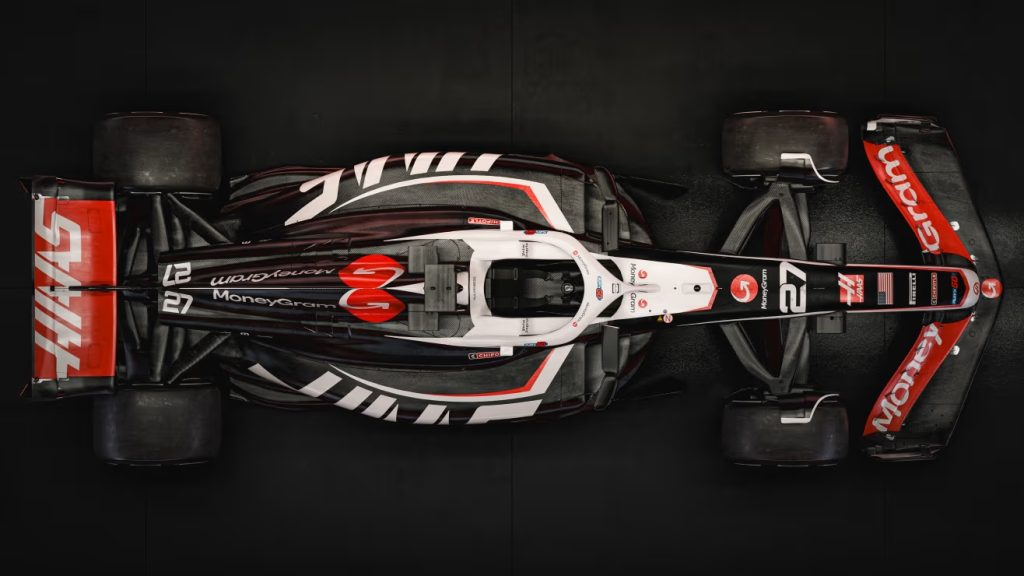
Williams - FW46
The launch of the new Williams single-seater took place in New York, at the iconic Puma flagship store. However, it was a partial presentation. In fact, only the livery of the FW46 has been revealed , while maximum confidentiality has been maintained on the technical innovations, which will only be made known during the first official tests. The aesthetics of the new car that will be driven by Albon and Sargeant do not differ much from the 2023 version. The navy blue color remains prevalent, with variations in lighter and darker shades. Furthermore, on the nose there is a double red and white stripe , a tribute to the glorious past of the team. 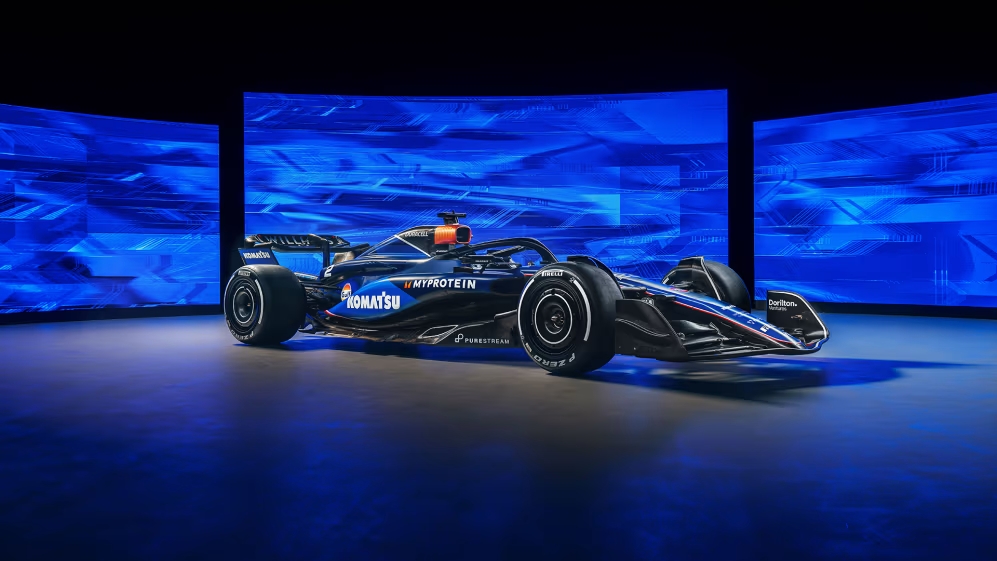
Sauber - C44
At Sauber , however, a choice opposite to that of Williams was made, revolutionising the colours of the livery . Goodbye to the red-white references, a sign of the collaboration with Alfa Romeo, and space instead for a powerful combination of black and acid green . As for the technical innovations, the most evident are the new pull-rod front suspension , which replaced the previous push-rod system, and an aerodynamic package with very aggressive lines . 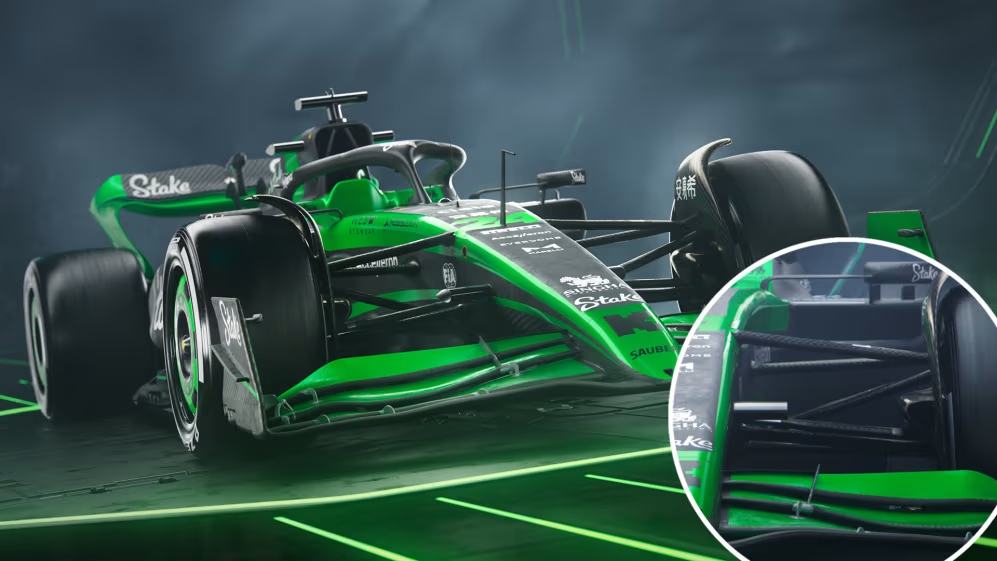
Alpine - A524
Let's now move to Enstone, where the veils covering the new Alpine single-seater have fallen, revealing what appears to be a real revolution. In fact, there are many new features that characterize the A524 . A lot of work was done on the frame , which came out completely redesigned as well as lighter . Furthermore, a new rear suspension system was introduced and the front suspension system was optimized (in both cases, however, the push-rod model was confirmed). Finally, it is also worth mentioning the important changes that have affected the air cooling system . 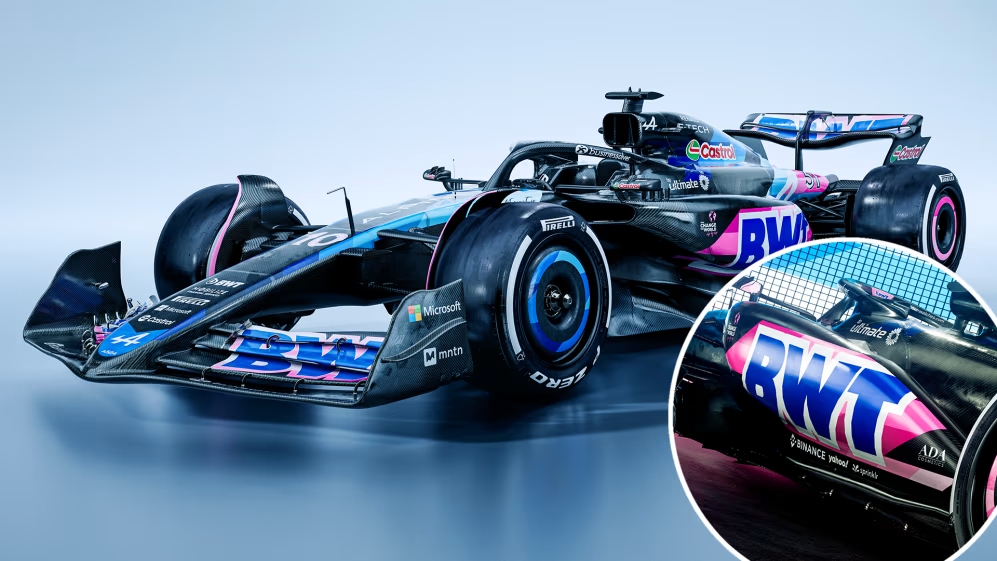
Visa CashApp Racing Bulls – VCARB 01
Visa CashApp Racing Bulls , the new name of the former AlphaTauri team, has instead chosen Las Vegas to unveil the VCARB 01. Even in this case, however, only renderings were shown and not the real car. The new single-seater features a livery that takes you back in time, because its colors and style recall that used by the latest Toro Rosso cars (2019): dominant blue, broken up by two white stripes with red edges. From a mechanical point of view, however, the clues that can be gleaned from the images seem to indicate a strong similarity with the Red Bull RB19. 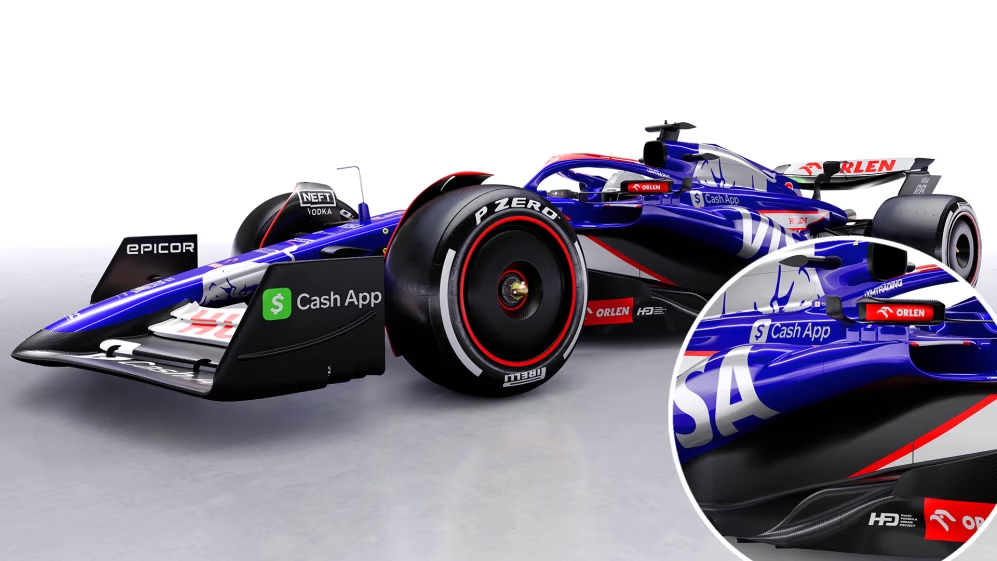
Aston Martin Racing - AMR24
The AMR24 , the car with which Aston Martin will line up at the starting line of the 2024 season, features significant evolutions compared to the 2023 single-seater, but no radical upheavals. The livery is in absolute continuity with last year , with the exception of a few details. More interesting, however, are the technical variations. What stands out above all is the shorter muzzle and the smaller air inlets . Furthermore, the rear suspension switches from the pull rod model to the push rod one , realigning itself with the front ones. Finally, it is worth highlighting the overall slimming of the bodywork .
Ferrari - SF-22
There are also many new features at Ferrari . The new SF-24 , shown only on video in the presentation event and then seen live during the shakedown held in Fiorano, already appears evolved in the livery , with the traditional white and yellow stripes that gain more space, starting from the nose, and with the wheel covers turning red. As regards the mechanics, the distinction between the front (push-rod) and rear (pull-rod) suspensions remains but the installation points of the arms on the frame change. Interesting elements are also the lengthening of the frame itself, the moving back of the gearbox and engine and the reshaping of the sides . 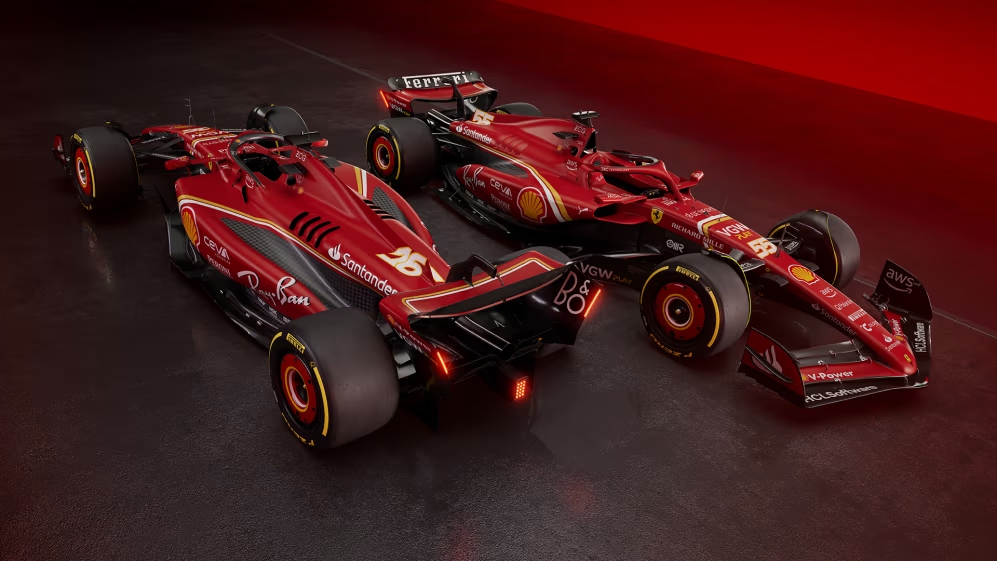
Mercedes - W15
At Mercedes, a truly revolutionary approach has been chosen. The W15 offers a radical renewal compared to the 2023 single-seater, both in form and substance. First of all, silver dominates the livery again , a tribute to the 90 years of the team. In terms of structure and mechanics, a very important change concerns the height from the ground , which decreases again but without reaching the record limits of 2022, which we had caused some problems. The chassis , nose and gearbox are also new, and the cockpit is positioned further back in response to the needs expressed by Hamilton. 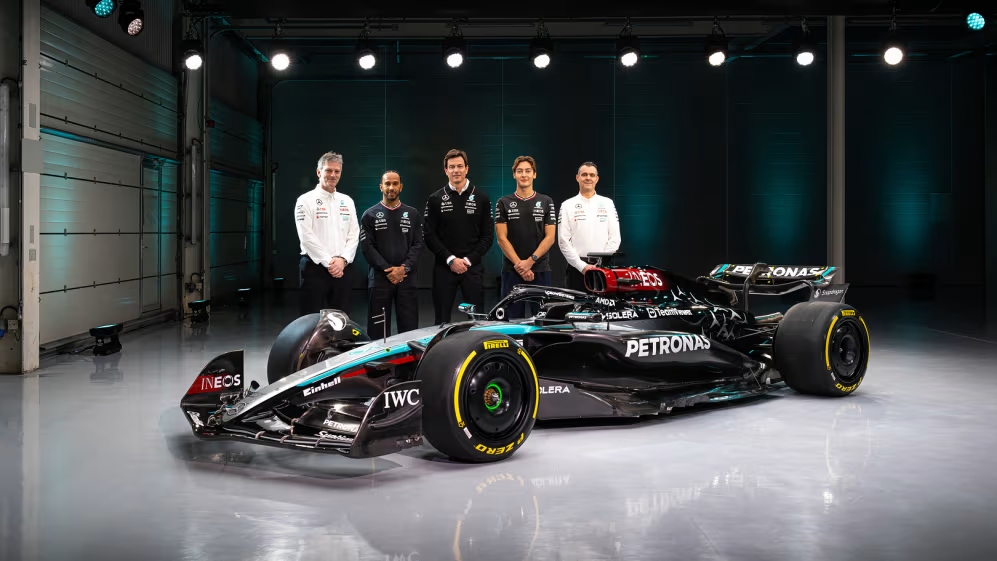
McLaren - MCL38
Among the latest single-seaters to be presented, the McLaren MCL38 showed itself to the world of enthusiasts with the classic livery dominated by orange , combined with the carbon black of the unpainted parts. From a structural and mechanical point of view, the English car manufacturer seems to have worked a lot on details and not on major upheavals. The nose attaches to the front wing on the second profile, the bellies are quite pronounced and go down drastically at the rear, on the bonnet there are two "pipes" which convey the hot air onto the rear wing. Finally, the distinction between rear (push rod) and front (pull rod) suspensions has been confirmed. 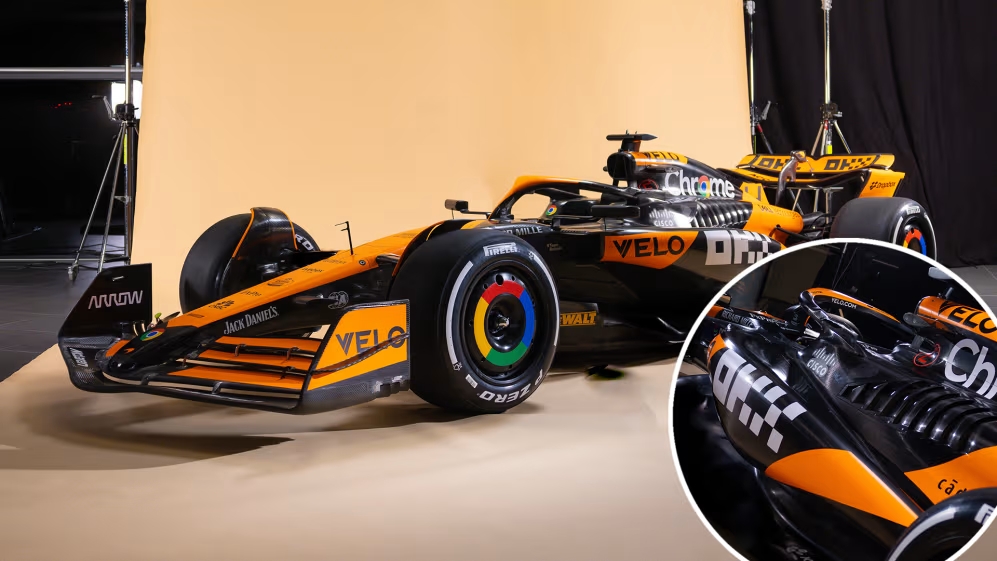
Red Bull Racing - RB20
The RB20, with which Red Bull will try to confirm its dominance of Formula 1 next season, took some time to unveil but did not disappoint expectations. Regardless of the motto "you don't change a team that wins", the Keynes team has revolutionized the single-seater with which it won the last championship. What remains practically identical is only the coloring. Among the most impactful innovations are the elongated snout , the completely redesigned entrance to the bellies and the overall shapes which appear very extreme . The suspension systems have been confirmed, but with changes to the kinematics. 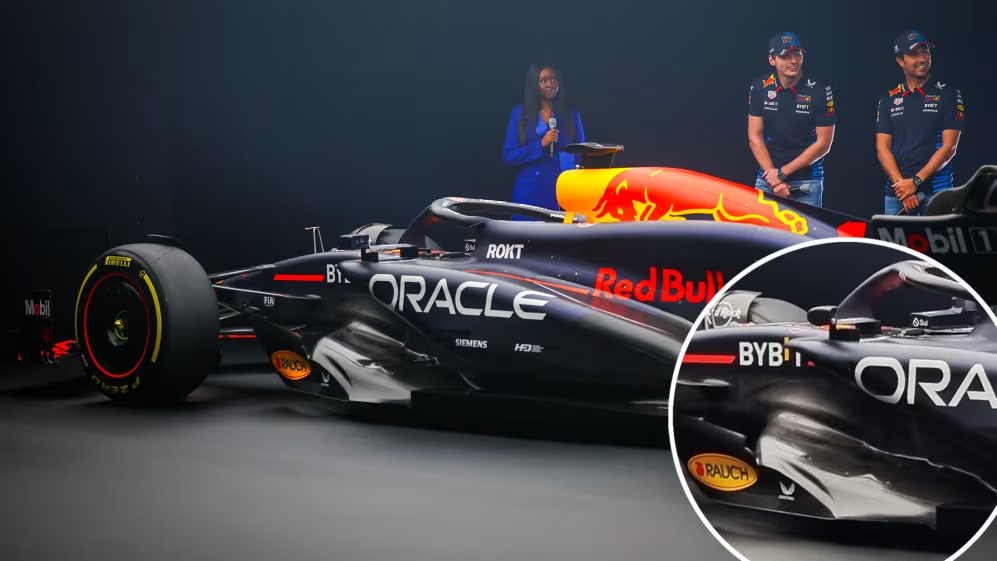
Formula 1 - Italian Grand Prix 2022
The original contents of this article are produced by an external service without any involvement of the press office of the Autodromo Nazionale Monza.
